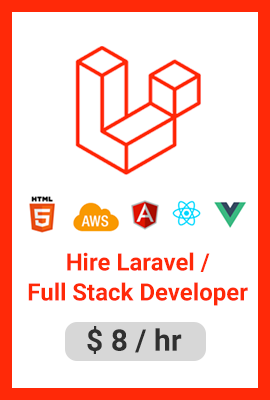The phrase “tech stack” is more than just a buzzword. However, like most of the tech jargon today, it’s not always clear what “tech stack” means exactly. The better you can understand what a tech stack is and why you need one, the faster your product or company can develop.
So what is a tech stack? It’s a crucial part of creating any web or mobile app, and it refers to the combination of programming languages and software underneath any development project. You can think of a tech stack like building a skyscraper. You wouldn’t start building the fountain in the lobby, would you? You would start with the building skeleton and foundation to make sure your building is secure from start to finish.
This skeleton and foundation is your tech stack. Any underlying elements you choose to be your frameworks, languages, and software products are what your entire application is built on. Why does it matter what you choose? What you choose to use when building your application will affect how it works and behaves in the future.
If your tech stack isn’t scalable for a growing business, you’ll start to notice cracks in the foundation. To see the tech stacks behind well-known companies, visit Stackshare. It might surprise you just how technical and complex these well-known platforms are.
Now that you know why scalable tech stacks matter for your business, let’s talk about the best real-life tips to keep in mind when building a tech stack of your own. While it’s true tech stacks can be made of dozens of different technologies, it’s important to make sure it’s scalable and valuable. From there, we’ll share how Sealights can help you accomplish more no matter which tech stack you choose.
Planning Your Tech Stack
Before diving into the decision making stage, you need to figure a few things out. You shouldn’t buy a car without shopping around, and the same is true for tech stacks though on a much more technical scale. It comes down to a few different things during this process:
- Familiarizing yourself with the technology and tools
- Keeping your business on track
- Prioritizing security and privacy
- Your employees needs
Now, let’s break down each individual step during the planning process so you can ensure you’re not missing anything important. The right planning positions you for success not only in the early design stages, but also beyond development and deployment.
1. Familiarize Yourself with Your Tech Options
The first thing to do is a bit of research. What options and features do you need in your tech stack? You need a clear idea of your goals and what tech will help you accomplish these goals sooner and within your budget. Here are the most popular technology stacks for startups, but don’t feel bound by these alone.
Here are some questions to keep in mind when you start your search:
- What is the lifecycle? Every technology has a lifecycle, and you don’t want to choose something that’s being cycled out or that won’t have much ongoing support.
- What features do you need? What are your must-have features? What can you live without?
- What’s your budget? Some programs and software will be costly, and you’ll need to make sure you can support these things long-term.
2. How Can You Keep Your Business on Track?
There’s something new on the market just about every day. It’s tempting to opt for whatever’s the newest and latest, but you’ll need to consider how these new technologies will actually benefit your company and serve a purpose. Do you really need this shiny new technology?
If you’re a critical thinker, you’ll realize you most likely don’t always need the next-best-thing. There are always new innovations that will offer your product something of value, but you should be careful before introducing something new into your stack just for the sake of newness.
3. Prioritize Security and Privacy
In this day and age, security can’t afford to be an afterthought. In fact, it should be your primary concern when you’re building your tech stack. Everything you use to build your stack needs to be secure and protected. Believe it or not, there’s a cyber hacker conducting an attack every 39 seconds on average. That just goes to show how rampant these attacks are for both small and large businesses.
Don’t make the mistake of assuming your business is safe because you’re not dealing with sensitive data. Any and all data is of interest to attackers. One of the best ways to track your real-time security is through logging. When you log your application, you track your status 24/7, and you can be alerted if anything fishy is happening so you can act fast. Click here to learn about log analyzers to see if one’s right for your stack.
4. Talk to Your Employees
One of the simplest ways to determine what needs to go into your tech stack is also the most overlooked. While you should think about your goals and your users, what about your employees? These are the ones who are using it and often know it best. They likely have the most insight into what would really help with the production, security, and so on.
In addition, whenever you introduce new technology into your stack, ensure your employees are properly trained. Don’t assume they’re already familiar with anything new. Even small changes can affect the entire stack, so make sure they feel confident moving forward.
How Sealights Can Take You Further
Last but not least, you need a way to take your own tech stack further, no matter what you choose. Today, your data matters more than ever. With SeaLights, you have access to actionable analytics across your entire pipeline. This makes your teams more efficient, and it cuts down on those high-risk releases all developers dread.
One example of how Sealights empowers you to do more with your chosen tech stack is through quality risk monitoring. Sealights’ Quality Risk automatically shows developers where any untested code changes are located. This lets teams focus more on the test development to catch problems at all stages. Teams have more control over their analysis, quality gates, and so on.
Ultimately, your tech stack can only get you so far on its own. You need the right tools and analysis to accomplish more in this competitive age. Sealights helps you work smarter, not harder.
Final Thoughts
If you want your organization to continue to survive in this new age of business, you need a range of technology that can grow with you. Investing in your tech stack is a great way to make that dream a reality, but you still need to be careful. It’s not enough to blindly invite the next-best-thing into your development process. You need to approach this process critically and with precision.
While there’s no such thing as a future-proof technology, you can come close with these tips above. By asking the right questions, knowing your goals, and valuing security, you can take steps in the right direction. What are you waiting for?















